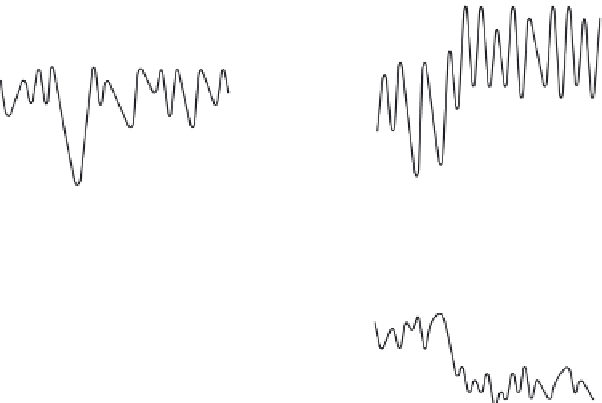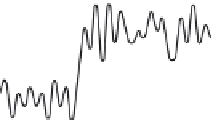Environmental Engineering Reference
In-Depth Information
(a)
(b)
EP
2
EIL
EIL
EP
EP
1
Time
Time
(c)
(d)
EP
2
EIL
EIL
EP
1
EP
1
EP
2
Time
Time
Fig. 6.2
(a) A pest population whose equilibrium population is close to the EIL is knocked
down to a low density by pesticide application (arrow), but quickly regains its original
density because of the relaxation of density-dependent processes. (b) Target pest resurgence
occurs when the pesticide has a stronger or longer-lasting effect on the natural enemies of
the pest than on the pest population itself. This allows the pest to rise to a new equilibrium
population (EP
2
) that is maintained until the natural enemies re-establish themselves. (c) In
this case, an innocuous herbivore is fl uctuating around an EP that is well below the EIL.
After a pesticide has been applied to control another species, the natural enemies of the
innocuous herbivore are greatly reduced, allowing it to increase to a much higher equilib-
rium population (EP
2
) where it achieves pest status - a secondary pest has been created. (d)
This population trajectory illustrates what can happen when a biological control agent is
introduced (arrow) - the extra mortality caused by the introduced enemy shifts the target
pest from an equilibrium population where the EIL is frequently breached to a new
equilibrium well below the EIL. (Economic thresholds are omitted from these fi gures for the
sake of clarity.)
pests' natural enemies and so contributes to undoing what it was employed to do. In this case,
target pest resurgence occurs when treatment kills both large numbers of the pest
and
large
numbers of its natural enemies. Pest individuals that survive the pesticide or that migrate into the
area fi nd themselves with a plentiful food resource and few, if any, natural enemies. The pest popu-
lation may then explode to fl uctuate around a higher equilibrium population density (Figure 6.2b)
until enemy populations re-establish.
Secondary pest outbreaks
The after-effects of a pesticide may involve even more subtle reactions. After pesticide application
it may not only be the target pest whose density surges. Alongside the target we may expect a
number of innocuous herbivores that have been kept in check by their natural enemies (take Figure
6.1a as an example). If the pesticide has a stronger effect on natural enemies than on the innocuous
herbivore itself, this 'potential' pest becomes a real one, and is called a secondary pest (Figure
6.2c).












Search WWH ::

Custom Search